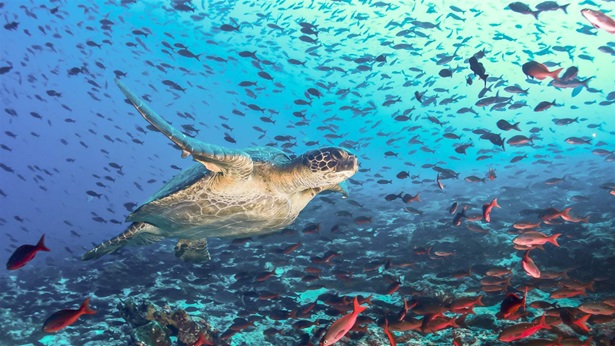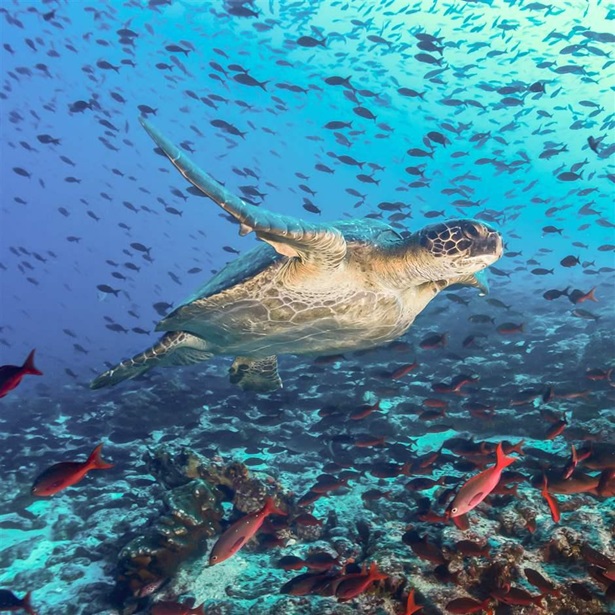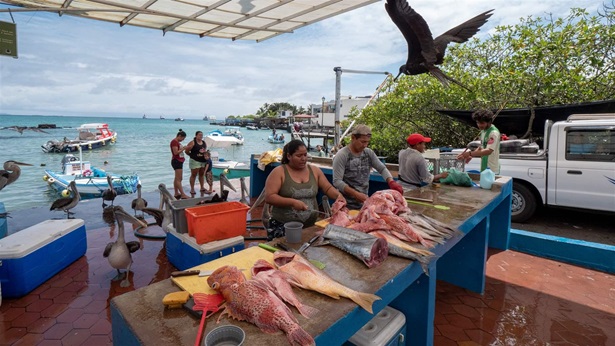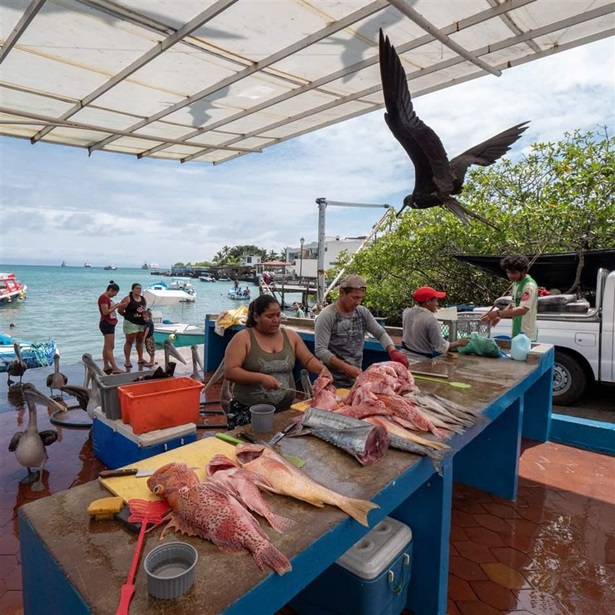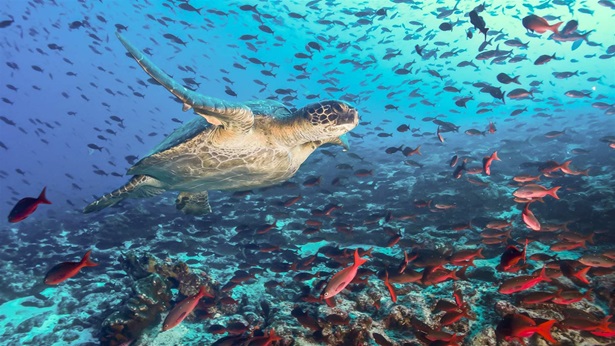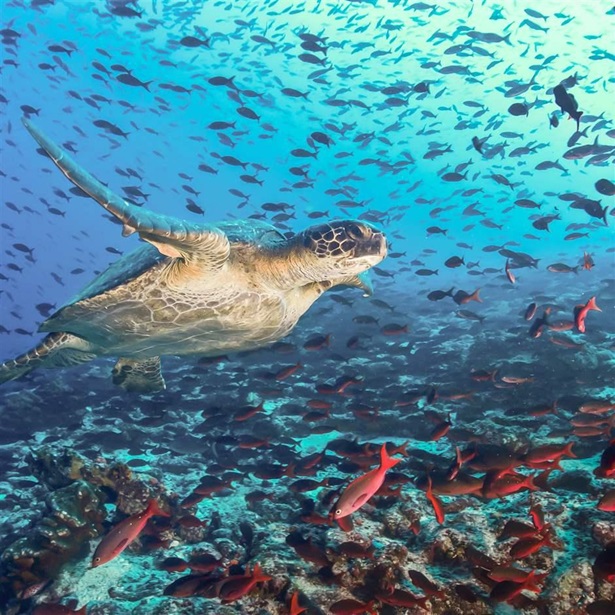Pew Bertarelli Ocean Legacy Applauds New Marine Protections Off Galápagos Islands
Ecuador boosts safeguards to key Eastern Tropical Pacific migratory route
WASHINGTON—The Pew Bertarelli Ocean Legacy Project today applauded Ecuadorian President Guillermo Lasso’s decree conserving 60,000 square kilometers (23,166 square miles) of ocean between the Galápagos Marine Reserve and the Costa Rican maritime border northwest of the Galápagos Islands.
The new Hermandad Marine Reserve includes a 30,000-square-kilometer (11,583-square-mile) fully protected area that will safeguard a migratory corridor used by sharks, whales, sea turtles, manta rays, and many other species between the Galápagos and Cocos Island in neighboring Costa Rica and an additional 30,000-square-kilometer (11,583-square-mile) area where longline fishing would be prohibited.
President Lasso signed the decree on Jan. 14 at a ceremony at sea near Santa Cruz Island. Under Ecuadorian law, the president can, by decree, direct the minister of the environment to create marine protected areas.
Ecuador’s new protections will build on the existing Galápagos Marine Reserve, which was established in 1998 and prohibits extractive activities in certain areas—while allowing artisanal fishing in others—across 133,000 square kilometers (51,352 square miles). The Galápagos archipelago, which is part of Ecuador, hosts some of the world’s highest levels of endemism—that is, species found nowhere else on Earth. Although the existing reserve has helped to safeguard habitats for some species, including hammerhead sharks and green sea turtles, the pressures from climate change and overfishing continue to threaten this unique and biodiverse ecosystem—and the local economy and communities that depend on an abundance of wildlife.
There has been strong local support in the Galápagos Islands for establishing robust large-scale marine protections. Government officials, community members, and other local partners have worked with the Pew Bertarelli Ocean Legacy Project in supporting scientists, economists, and nongovernmental organizations in assessing options for expanding marine protections near the Galápagos that could benefit the economy, fishers, and nature.
Ecuador’s minister of the environment, Gustavo Manrique, said: “We’re proud that our local community and the fishing industry came together in support of these marine protections. We all depend on the continued vitality of these rich waters and understand that preserving our ocean provides significant social, economic, and environmental benefits.”
Eliecer Cruz, former minister of the Galápagos Government Council, who leads Más Galápagos, a citizens’ initiative supporting expanded protections, said: “This is a strong step toward maintaining the health of our spectacular array of marine life—and our economy. Our marine reserve has been remarkably productive, and this builds on that success.”
Dona Bertarelli, co-chair of the Bertarelli Foundation and Patron for Nature for the International Union for Conservation of Nature, said: “Ecuador has added a vital piece to the marine conservation puzzle for the Eastern Tropical Pacific region—some of the world’s most abundant and biodiverse waters. Protecting this critical migration route helps preserve biodiversity throughout the region, build resilience against climate change, and moves us closer to the global goal of protecting 30% of our planet by 2030. This is an important win for marine life—and the fisheries and communities that depend on it.”
Matt Rand, who leads large-scale marine habitat conservation efforts for The Pew Charitable Trusts, said: “Safeguarding the pathway between the linked biodiversity hot spots of the Galápagos and Costa Rica’s Cocos Island helps to preserve this spectacular array of marine life. Ecuador’s new protections recognize the critical importance of connectivity in effectively protecting highly migratory species such as sea turtles, sharks, and whales.”
###
About the Pew Bertarelli Ocean Legacy Project
The Pew Charitable Trusts and the Bertarelli Foundation joined forces in 2017 to create the project, with the shared goal of establishing the first generation of ecologically significant and effective marine protected areas around the world. This effort builds on a decade of work by both organizations to protect the ocean. Between them, they have helped to obtain designations to safeguard over 8 million square kilometers (3 million square miles) of ocean by working with philanthropic partners, Indigenous groups, community leaders, government officials, and scientists. Since 2010, the Bertarelli Foundation has sought to protect the ocean for future generations through marine conservation and collaborative marine science research.

